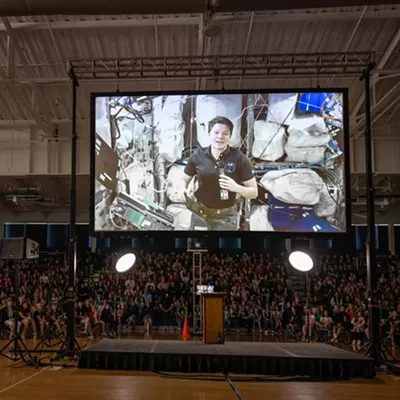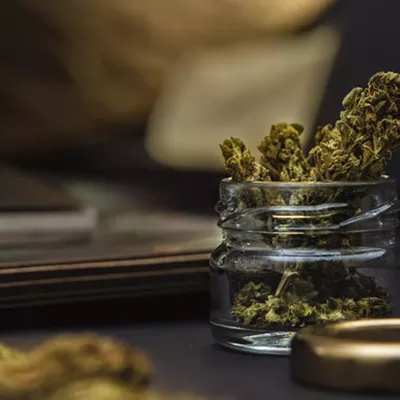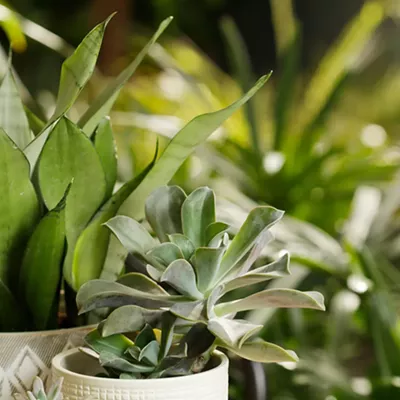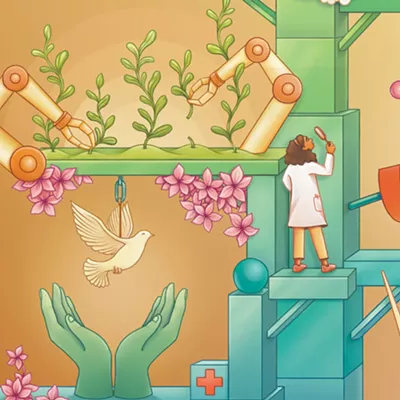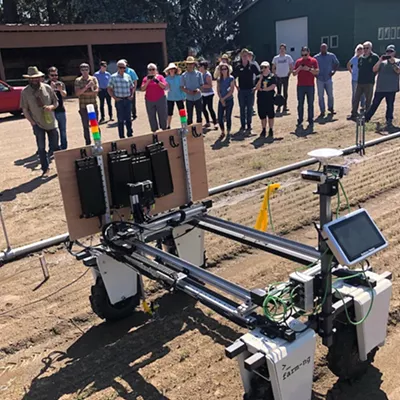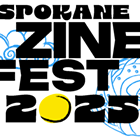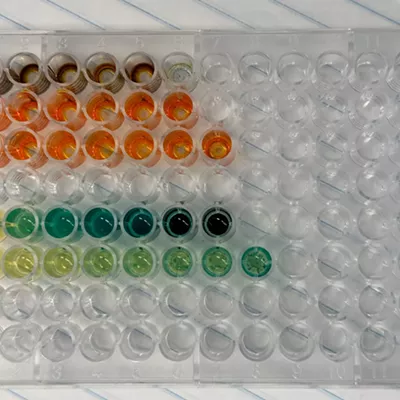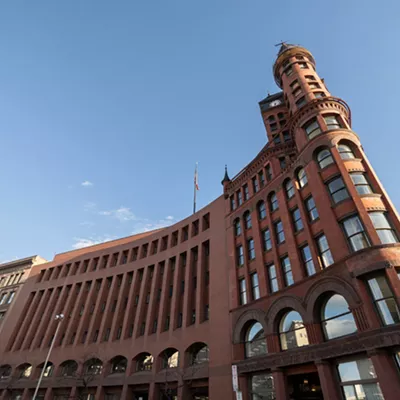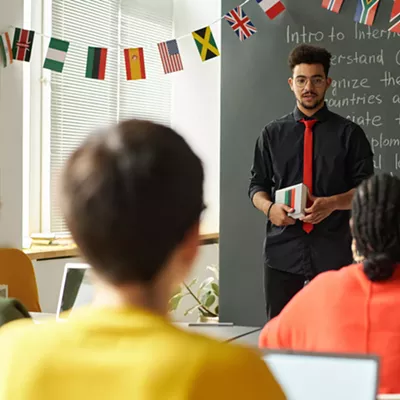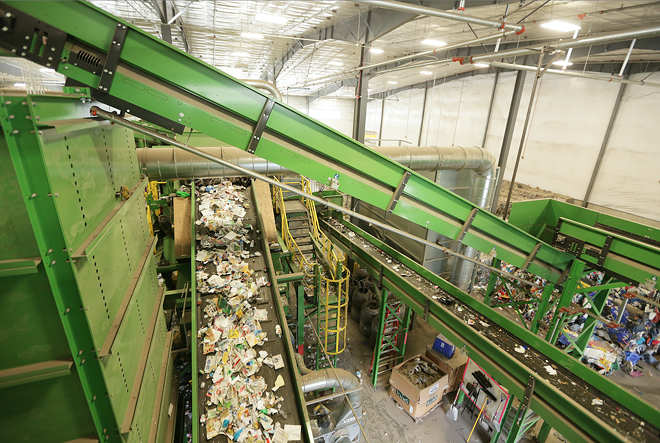
Over the past week or so, The Guardian started publishing a series of stories in its "United States of Plastic" investigation, exploring how U.S. recycling is affecting other countries and how most of the plastic that's been "recycled" has actually landed in landfills or incinerators.
That prompted at least one Inlander reader to send us this query: "I live in Spokane and I’d like to know if any of the plastic I put in the recycling bin ends up harming people in other countries. I read this article and I’d like to know if you can track our plastic recycling from my bin to it’s final destination."
To find out, we spoke with Jackie Lang, Pacific Northwest senior area manager for public affairs for Waste Management, the largest recycler in North America. The company owns and operates the Spokane Materials and Recycling Technology (SMaRT) Center, which accepts recyclable materials from Central and Eastern Washington, Idaho and British Columbia.
A quick spoiler alert before we dive into the Q&A: because of the competitive nature of the recycling industry, Waste Management would not share the names of the companies it sends our recycled materials to. However, we did get a slightly clearer picture of the journey those materials take.
The questions and answers below have been edited for clarity and length, based on a phone conversation and email with Lang on Monday, June 24.
INLANDER: To start, if I recycle plastic in Spokane, is that being sent out of the country? (The Guardian's investigation found that after China stopped accepted recyclable materials that are overly contaminated, much of the United States' plastics started being shipped abroad to other countries with poor records of plastic waste management, contributing to landfills and burn piles in some cases).
LANG: With plastics, we're shipping to North American companies only at this time. We ship to a variety of domestic companies at this time, and the list changes frequently because the markets are highly competitive and the pricing is in flux.
What types of products are plastics accepted at the SMaRT Center being made into?
The PET water bottles [most soda and water bottles] that come into the SMaRT Center are likely used for new carpet or clothing.
Number 2 plastics are likely made into rigid plastic products like plastic buckets.
Number 5 is now being made into plastic paint cans, which is new in the market place.
Are there limits on the types of plastic accepted at the SMaRT Center?
Yes, those lists are community specific. So if you live in Spokane County, that list is on the website for Spokane County, if you live in Liberty Lake, the list is at wmnorthwest.com/libertylake.
Historically, recycling lists have varied by community. We’ve been working in the last couple of years to harmonize those lists as part of our broader efforts to clean up recycling and make sure the right materials get in the right containers.
The materials that belong in the recycling stream are materials that will actually end up in new products. The changes connected to China have prompted all kinds of conversations over the last year, and it takes time to make change happen. So we’re working very hard to move communities throughout the region to a more harmonious list.
Ideally, what plastics are acceptable?
We don’t focus on the numbers, we haven’t for years. We focus on the shapes, because that tends to be an easier way for our customers to understand what’s acceptable in the cart.
We’re looking for bottles, tubs and jugs, because those types of materials tend to have the characteristics that end markets want.
What are some types of plastics you don't want? For instance, can I recycle a plastic clamshell I got food in at the grocery store?
Plastic bags are the biggest problem in the Spokane area. They wrap around the equipment at the SMaRT Center and have to be cut away. This brings recycling to a halt. It delays the recycling process and adds unnecessary cost to the local recycling program.
The best way to recycle plastic bags is to return them to a grocery store that offers recycling for plastic bags. Can they be recycled? Absolutely! Just not in your curbside cart.
Clamshells are not acceptable. A tub (which is acceptable) is like a yogurt or sour cream tub.
Things that aren't allowed include plastic bags, flexible plastics, film plastics, styrofoam and plastic coffee cup lids and coffee cups are also not recyclable in most cases.
Other examples for summer include that paper plate you used for food — that's not recyclable. The Solo cups from the picnic? No.
Back to our interested reader's question: If we recycle plastic in the Spokane area, is it likely to contribute to another community's landfill?
Now more than ever, the choices we make as consumers have an impact on our community sustainability. The best choice is a reusable water bottle. Skip the disposable water bottle all together: the best choice is to not generate waste in the first place
When you are using materials that are accepted in our local recycling program, you can know with confidence that those materials will end up in new products.
It’s more important than ever, when we’re talking about those materials, to get the right materials in the right containers. We need everybody’s help to clean up recycling. We’re on the right path, we’re making progress, but we’re not there yet.
What are the other most desirable recycled materials?
There are three general categories that make the most sense when we talk about end markets.
They want clean cardboard and paper, aluminum and tin, and thirdly they want tubs, jugs and bottles.
What about glass? It looks like that's currently listed as a "garbage" item for some communities in our area.
Glass is certainly recyclable, the question is, is there a market for recycled glass?
At times it can be more economical to manufacture new glass than it is to collect, sort and haul and remanufacture old glass. Part of the issue with that is the weight of glass. When you're talking about plastics or paper, we can compact it into bales and efficiently ship a lot of material to a manufacturer. Glass is heavy and much harder to manage, and that adds to the costs.
Glass is what is considered a marginal material because there's no glass market in the region at this time. Marginal items are those materials for which there's not a stable, long-term demand. (What we learned from the China situation is that it's best to match up local recycling lists with demand.)
When it comes to materials such as glass, Waste Management's approach is to make sure communities have the information they need to make a decision. There's no right or wrong answer. As an example, you'll see glass on the recycling list for Spokane Valley but not for Liberty Lake. To be clear, Waste Management has the equipment to process glass, glass comes to the facility every day, and there's a cost to specific communities that choose to include glass in their local programs.
But the glass is not recycled into new glass. There's no market for demand at this time. Instead, glass received at this Waste Management recycling facility goes to beneficial use. It is crushed and used as a substitute for road base.
What are other "marginal" materials?
Milk carton and aseptic packaging are also marginal materials. There's paper in both items and the pulp mill/paper mill processes can pull out some of the paper for recycling. There's also plastic in these products, and the plastic ends up in the garbage.
Again, there’s no right or wrong answer about whether these items belong on local lists, although there are costs involved to the community. We make sure the community has the information needed to make a decision. Given the new focus on end markets, and keeping local recycling programs as economical and efficient as possible, many communities are removing marginal items from their lists.
Some communities used to have residents sort their recyclables into separate bins at the curb. Has switching to single stream collection — where all recyclables go in one bin — contributed to an increase in contamination?
You're absolutely right. Over time single stream recycling, this idea that you can throw everything into one bin, became an invitation to go on autopilot. As a result, we started getting a lot of garbage in with the recycling. So now we need to push the reset button and get clarity on exactly what belongs in those bins.
We spend a lot of time talking about liquids, as those continue to be a problem. People know they can recycle the soda bottle. But if that has a couple inches of soda in it, that’s a big problem, because that gets onto the cardboard and paper and renders that material nonrecyclable. Paper and cardboard can’t be recycled if the fiber has been saturated with food or liquids.
In 2018, less than 10 percent of the material received at our Waste Management recycling facility in Spokane was sent to landfills — either because it was garbage (garden hoses, dirty diapers, food, etc.) or because the condition of the material had been compromised to the degree that the material could not be recycled. For example, newsprint is recyclable until it is used to wrap a fish. If a fish arrives at the recycling center wrapped in newsprint, both the fish and newsprint end up as garbage.
What is being done to combat contamination at the SMaRT Center?
There’s a reason that we’ve been successful in finding end markets for our materials. That’s because we have longstanding relationships with end markets and we deliver quality material.
This is our business. Waste Management is the largest recycler in North America and we are bringing the depth and breadth of our recycling expertise to make sure that our materials are as clean as possible when they go to end markets.
We’ve slowed our processing lines at SMaRT, we’ve added people to the lines to remove as much contamination as possible, and we’ve strengthened our public education efforts, to make sure people have the right information about what can be recycled.
We know what materials manufacturers want for new products. That information is clearer than ever today: that’s one of the benefits of the changes from China, is really this recycling reset. We’ve had these straightforward transparent conversations about what really gets recycled.
How often are the lists of what is truly recyclable updated?
Historically, we have worked hard to not change the list very often because we want to keep recycling simple.
In the last year or so, we’ve been talking with cities and counties about revising the lists, so that they sync up more directly with end markets.
We have updated lists within the last month in consultation with the cities of Airway Heights, Deer Park and Liberty Lake.
For Spokane County, the recycle guide is in transition, but the updated list of recyclables is posted online as part of the new Waste Management CartWise app information.



